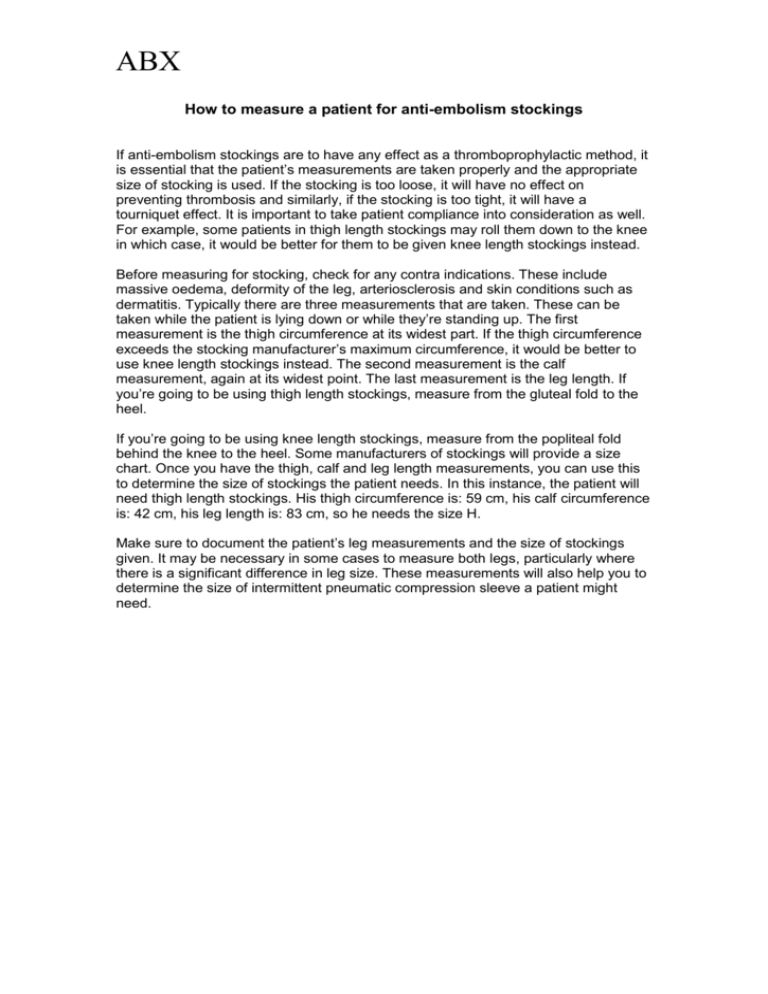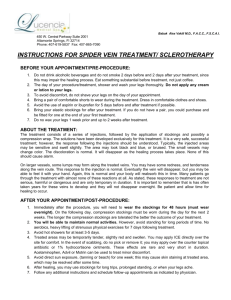Measuring a patient for anti
advertisement

How to measure a patient for anti-embolism stockings If anti-embolism stockings are to have any effect as a thromboprophylactic method, it is essential that the patient’s measurements are taken properly and the appropriate size of stocking is used. If the stocking is too loose, it will have no effect on preventing thrombosis and similarly, if the stocking is too tight, it will have a tourniquet effect. It is important to take patient compliance into consideration as well. For example, some patients in thigh length stockings may roll them down to the knee in which case, it would be better for them to be given knee length stockings instead. Before measuring for stocking, check for any contra indications. These include massive oedema, deformity of the leg, arteriosclerosis and skin conditions such as dermatitis. Typically there are three measurements that are taken. These can be taken while the patient is lying down or while they’re standing up. The first measurement is the thigh circumference at its widest part. If the thigh circumference exceeds the stocking manufacturer’s maximum circumference, it would be better to use knee length stockings instead. The second measurement is the calf measurement, again at its widest point. The last measurement is the leg length. If you’re going to be using thigh length stockings, measure from the gluteal fold to the heel. If you’re going to be using knee length stockings, measure from the popliteal fold behind the knee to the heel. Some manufacturers of stockings will provide a size chart. Once you have the thigh, calf and leg length measurements, you can use this to determine the size of stockings the patient needs. In this instance, the patient will need thigh length stockings. His thigh circumference is: 59 cm, his calf circumference is: 42 cm, his leg length is: 83 cm, so he needs the size H. Make sure to document the patient’s leg measurements and the size of stockings given. It may be necessary in some cases to measure both legs, particularly where there is a significant difference in leg size. These measurements will also help you to determine the size of intermittent pneumatic compression sleeve a patient might need.




